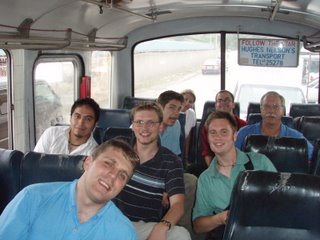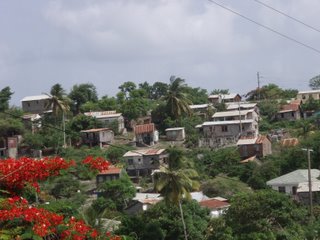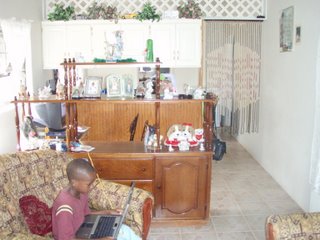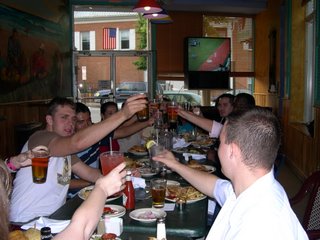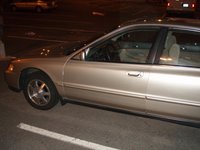Foster Youth and Post Traumatic Stress:
“Applying Lessons Learned in Vietnam to Help Foster Youth With Post Traumatic Stress Disorder.”
Copyright 2006 by Lee Klejnot
In a recent case study released by Casey Family Programs and Harvard Medical School, the rate of Post-Traumatic Stress Disorder (PTSD) among adults who were formerly placed in foster care was found to be up to twice as frequent as among U.S. war veterans. In fact it was found that 25% of foster youth alumni have experienced Post Traumatic Stress Disorder within the last 12 months based on interviews and studies conducted on 659 former foster youth between the ages of 20-33 who were in foster care between 1988 and 1998.
PTSD first became a major phenomenon in the Vietnam War. It was found to occur because of the lack of support and services offered to returning veterans. Supportive services were critical in order for the veterans to deal with the trauma they had experienced. Post war, it was learned what mechanisms existed that allowed soldiers from WWII and the Korean War to return as heroes and adjust back into society with lower occurrences of PTSD. These mechanisms were studied and are now being applied to help the Vietnam, Gulf and Iraq war veterans to deal with their experiences and transition more successfully to civilian life. The question we need to ask is how we can apply these same techniques to the treatment of PTSD in foster care alumni. This is what will be discussed in this brief article.
Experience of Vietnam vs. WWII
Vietnam is known as America’s “dirty war” and has a very negative reputation. Often at the mention of this war people recall the Vietnam Memorial wall with a seemingly endless list of names of American men and women who lost their lives. The Vietnam War had significant differences from WWII with heavy mental health causalities among our returning soldiers. To explore the causes of this epidemic, we need to compare WWII and the Vietnam War. The first major difference is that in WWII, the troops and allies advanced forward on a constant front pushing towards the final confrontation in Germany. There was no front line in Vietnam. The war surrounded the soldiers at all times and from all sides, leading to constant “fight or flight” stress. In Vietnam there was an endless series of mostly deadly confrontations while on patrol in the jungles, during night raids, and from booby-traps and snipers. This leads to the second difference. In WWII soldiers stayed with their squad for the entire war. They became a band of brothers. The bonds that were formed during that war were for life. During the Vietnam War, soldiers were drafted for a one year tour of duty after which they returned home with their feelings held tight inside with endless nightmares. For them, the goal was to simply survive until their tour was complete. Another recruit would be dropped into a platoon of men each of whom had a different ending tour date. It was not about being a team; it was about surviving, and helping one’s buddies survive, for a year.
A further difference is how soldiers were treated upon their return from the war. Significantly, when WWII was over the men returned together on ships for the journey home where they were able to use that time to reflect about the war, to share their experiences and to start to heal. When they arrived home they were greeted as returning heroes, with ticker-tape parades and cheering crowds. During the Vietnam War, each solitary soldier would leave his platoon and his buddies; once his year was up he was out of there and gone. Often the soldier was torn between feelings of relief and guilt; guilt because of the knowledge that he was leaving his buddies to face hell and potential death, relief in being free from that fear. There was also no transition time from war to home; the journey often took less than 24 hours; and upon his arrival at a U.S. airport the Vietnam soldier was often confronted with animosity from some of his fellow citizens. There were no parades; disturbingly, a few Vietnam veterans actually talk of coming home and being spit on and called baby killers by a population increasingly angry about the war. This experience was incredibly harmful.
The last major difference between the two wars was the fact that WWII veterans organized as a cohort. American Legions were formed where the veterans could organize, meet, share their experiences, and lobby for their needs. Vietnam veterans did not stay in contact with each other, partly due to the feeling they had about leaving Vietnam which prevented them from communicating with their fellow soldiers. When they returned to the United States they had to focus on transitioning to civilian life on their own unlike the mass assimilation that was required of America to support the returning WWII servicemen. Vietnam veterans did not return as a mass group. For the most part they returned at a constant trickle due to the different deployment dates and the one year of service requirement. The need for services was not as recognized since they did not return as a large group requiring special services for their very real needs. They were unable to advocate as a group because of these many factors. Added to this was the perceived climate of hostility in the country for veterans when they returned. This was seen on television through the constant showing of war protests and war footage. Vietnam veterans did not receive, nor were they able to lobby for, the support they needed to work through their guilt, confusion and the horror of their own war memories. The differences in the way the war was fought, the reaction they received at home and the lack of support from fellow veterans are the major causes of PTSD in Vietnam veterans.
The Connection: Linking Vietnam Veterans PTSD with Foster Youth PTSD
Later therapy, especially group therapy, was found to help Vietnam veterans. Group therapy primarily consists of individuals in the group sharing their experiences and offering each other support. The role of the facilitator is to help identify issues to be discussed and areas that hold emotional intensity, and to create a space where every member of the group can make a contribution. In addition to group therapy, it was found that individual counseling sessions were beneficial to the veterans. These methods of therapy were used due to the special needs of Vietnam veterans. They did not receive the gradual healing from parades and recognition of service. They were not able to release the feelings they had because they did not have a cohesive group of other Vietnam vets who had been there, who understood. Coming together as a group allowed them to meet others who had also experienced the trauma of war, while the therapeutic dynamic allowed for healing by encouraging the discussion of the stress, terror and guilt these soldiers had been carrying around for many years in solitude and secret.
Foster youth experience PTSD related trauma as soldiers do during war, except their war is usually bloodless and the wounds incurred are in many cases solely psychological rather than physical and psychological. A soldier’s enemy is more defined and clear; often somebody who looks different, speaks a different language and lives in a different country. For a young person entering foster care the “enemy” is quite often their own family. They love the “enemy.” There are countless reasons why a child may be removed from his or her biological family, ranging from sexual abuse to neglect to physical and emotional abuse. They may have loving parents who are unable to care for them due to disease, emotional instability, or incarceration. Each of these scenarios creates the potential for PTSD. PTSD is most strongly tied into the traumatic effects of removal from the family unit. As the Casey Alumni study indicates “The very act of removal from their parents is often traumatic for the youth as well, potentially resulting in post-traumatic stress disorder (PTSD) and creating a sense of hyper-vigilance because their lives become unpredictable.” Smoothing the removal process and creating systems that maintain some level of stability in the lives of foster youth are key factors in lowering their rate of PTSD occurrence. It is also critical to dedicate research and implement strategies on how to best heal foster care alumni of the trauma from their experience so that they, like the veterans of other wars, can enter society and function at the highest capacity as American citizens in the pursuit of life, liberty and happiness.
PTSD Therapy
As discussed earlier, Vietnam veterans suffered an exponentially higher rate of PTSD than other veterans because of the lack of group formation from a constant rotation of troops, having a battle front on all sides, and an inability to decompress with other veterans before and after coming back to America. Because of the particular stigma of this war veterans did not find ways to release the stress and terror they experienced in the war. The journey of foster youth is similar. There is a lack of group (or family) formation because of the constant rotation of placements, foster youth often feel completely alone and with a battle raging on all sides (strangers dictating every movement of their lives, a constant shuffle of new beds and new companions, a fractured education and lack of consistent care) and they carry the guilty secret of being in placement and not having a family of their own. While in care, foster youth do not have a set of peers with whom to share their confusion and sorrow, and once out of care they often hide this particular stigma of their past.
Thankfully steps were eventually taken through different therapy methods to help the men and women who had served in the Vietnam War. The primary mechanism for healing was group therapy, which offered the ability to speak about their experience during the war with fellow veterans who truly understood their feelings of pain and suffering. It was through this therapy that veterans were finally able to speak and to let go of that burden. These veterans in turn were able to do public speaking and advocacy work to help others who had been involved in the conflict to get the recognition and support they needed.
Existing Therapeutic Model for Former Foster Care Youth:
Alumni Association for Former Foster Youth
Entering foster care is a quick initiation into an exclusive club, a club no one would volunteer to be a member of, but it is a club none the less. One of the most difficult issues for the youth being served is the system becoming their parent which forces the youth to choose between their biological parent and what the system asks of them. To do what the system asks of them is in their mind betraying their parents. Furthermore, while there are supports – social workers, teachers, psychologists and other counselors through the State – for the youth until age 18 or 21 there are no therapeutic systems or groups available that address their unique needs as foster youth. Only when these therapeutic needs are addressed can foster youth begin to advocate, share their stories and create their own families outside of the system.
A mysterious thing happens to the members of the Foster Care Club when they are discharged form foster care, they tend to disappear. Foster youth are discharged to the cruel world of reality prior to their ability to manage independence. For whatever the reason, the State had determined that their role of parent is over and they will no longer provide for them. Even though Chafee funding is available to all States, not all youth have access to this funding due to financial issues or lack of State programming that is supportive of the youth aging out of their system. Regardless of the reason for discharging youth before they are ready, it is a sad commentary for the youth that the State took to raise. No parent says a final goodbye and good luck to their child at 18 or 21.
Not only do foster youth lose the financial support and some sense of belonging somewhere – “in the system” – when they leave care, most of them lose any connection with peers, with those who share a similar background, similar experiences and similar emotions. For foster youth who leave the system, there must be a way to give back, to connect, to advocate and to share their story with younger foster youth coming through the system. Young people who survived and succeeded in foster care are now the Alumni; they are the Alumni experts in what it takes to successfully transition to independence. They know the roadblocks that can occur, such as attending college with academic gaps from a piecemeal education from constant movement in placements, the lack of a support system in times of crisis, the struggles of renewing contact with their biological family, and simply adjusting to the real world. These issues can completely catch these young people off guard when they leave care.
Young adult foster care alumni continue to struggle with feeling of insecurity believing that the bottom will eventually drop out from under them. This sense of insecurity stems from the pain of losing their family of knowing they have a family that they cannot connect with for their own mental stability. Sharing their “story” with a group promotes healing because of the level of understanding that can only come from other former foster youth. Just like Vietnam veterans and the veterans of subsequent wars shared their experiences with each other and began to overcome the trauma left behind by the war, foster youth need to share their own “war stories” of family abandonment, separation and termination in order to begin their own healing.
Work needs to be done to connect transitioning foster youth to a network of support, and to create a speakers bureau of successful alumni to become a resource for the many agencies involved in the most important work of forging a future for one of the most vulnerable populations in America today.
The best way for this work to be carried out is through a national foster youth alumni association with local branches, along the lines of the American Legion which has been so helpful to generations of veterans. The Constitution of the American Legion ends with these words of purpose: “to consecrate and sanctify our comradeship by our devotion to mutual helpfulness.” This comradeship is as important to foster care alumni as it is for veterans.
Leadership has been taken in this effort by Casey Family Programs, a longtime supporter of and advocate for all foster youth. They have started an alumni group called Foster Care Alumni of America (FCAA), which can be located at www.fostercarealumni.org. The main idea behind FCAA is to establish local chapters to effectively reach out on a region- state- and eventually nationwide level. Basically, this alumni group would have the same organizational structure as the American Legion but on a smaller scale. Casey needs to hear from other agencies and former foster youth in order to make this important organization a priority so it can effectively grow to make foster youth across the nation effective advocates through networking, sharing and training. Many states have foster youth advisory boards and associations which is a great start. One of the most dynamic and effective is the California Youth Connection (www.calyouthconn.org). FCAA should become an organized effort to connect these programs and youth into a dynamic, cohesive national voice. Such an organization would go far to heal the wounds of former foster youth, provide a network of support for emotional, academic and professional growth, and offer hope, encouragement and advice to those still in care. Foster care alumni have an intimate understanding of the welfare system based on their experience growing up in the system and their observation from the outside as they age out of care and become active citizens. Casey must continue to support the Foster Care Alumni of America by providing additional funding for the staff needed to effectively carry on the organizations critical task of building chapters across the United States.
Based on the most recent numbers, 800,000 children were served by foster care services, and 523,000 children are still in care. This number has doubled compared to 20 years ago. Every year 25,000 or more foster youth between the ages of 18 and 21 must leave the foster care system when they become legal adults, and many are left without any support, family connections, or the skills they need to succeed in life
After Vietnam, the returning veterans needed a community and support to deal with their Post Traumatic Stress but unfortunately those resources were not identified as a need and veterans suffered immensely. The mechanisms of group therapy, counseling and veterans groups have since been established. These resources and services came from lobbying and hard advocacy work that fought for and obtained the rights and services that veterans have available to them today.
The Foster Care Alumni of America is a beginning for foster youth as the advocacy that brought about services and rights for the Vietnam veterans. It provides an opportunity of bringing together the foster care leaders of tomorrow and bringing youth together who have been successful at transitioning through the child welfare system. It provides an opportunity for foster care alumni to learn how to advocate in a positive manner for youth coming through the system behind them. The momentum is there and now the connections need to be made. Now is the time to apply the lessons learned from our returning Vietnam veterans to the foster youth who are the parentless, whom the state and the taxpayers are responsible for – for whom the state and taxpayers must act as parent. The State is the provider and protector for these young people. In that role, the State should grant the youth an opportunity to observe and participate in the “whole process”. Having a strong foster youth alumni group can make this all possible. The Constitution of the American Legion ending words of purpose summaries the current need in foster care for an alumni group “to consecrate and sanctify our comradeship by our devotion to mutual helpfulness.”
About the Author:
Lee Klejnot grew up in the Indiana foster care system from the age of 13 on. He is an experienced youth advocate, having worked at the Orphan Foundation of America (OFA) for the past two-and-a-half years and prior to that having interned at both the state and federal Congressional levels.
At OFA, Lee administered the Education and Training Voucher (ETV) programs for the states of Arkansas, Colorado and North Carolina, disbursing over $1.64 million annually to over 400 students. In his role as ETV coordinator Lee worked with financial aid offices and social workers to ensure that students get the funding they need. He also worked directly with students, advising, guiding and encouraging them to make the most of their educational opportunities. Lee was involved with the program since its inception in the 2003-4 academic year, and was instrumental in developing the program mechanisms that have brought OFA to the forefront in ETV administration nationally.
Lee graduated from Purdue University of the B.S. in Organizational Leadership and Supervision. As a student he interned with the State of Indiana as well as with the House Republican Conference in Washington D.C. He spoke before the Congressional Roundtable on Foster Care and the Pew Commission on Foster Care, and was a featured speaker at the Casey Family Programs’ “It’s My Life Conference”. Most recently, he was interviewed by National Public Radio (NPR) on outcomes for foster youth in post-secondary education.
Lee left OFA in July to start service with the Peace Corps, for whom he will volunteer as a youth development specialist in the Eastern Caribbean.
Questions or comments?
Lee can be contacted at: klejnot@gmail.com
***Thanks for reading the article below intro email that can be sent along with the article to any intersted publishers you may know. I do not want any fee or compensation, I just want the word to get out.
Here is a Sample Intro email/letter to help get the PTSD article published. Again thanks for your help. Lee
Hello,
I am sending you this email with the attached article titled “Applying Lessons Learned in Vietnam to Help Foster Youth with Post Traumatic Stress Disorder”. This article has been written by a former foster youth Lee Klejnot who has worked in post-secondary education field for foster youth for the past 3 years.
This article is excellent in the way that it takes a new approach and look at foster care that is refreshing and very interesting especially since it is from a foster youth Alumni. It has the potential of having a significant impact. Please take the time to read it. Lee is asking that the article be passed onto any interested party for publication, be it in a newsletter, magazine paper or website. He is not looking for any compensation he just wants to see it published with the simple intention of getting the word out to help advocate for other foster youth.
Please take the time to send this and send it off to anyone you believe would be willing to publish it.
Sincerely,
For more info about Lee or how to contact him read his Bio at the end of the article.
